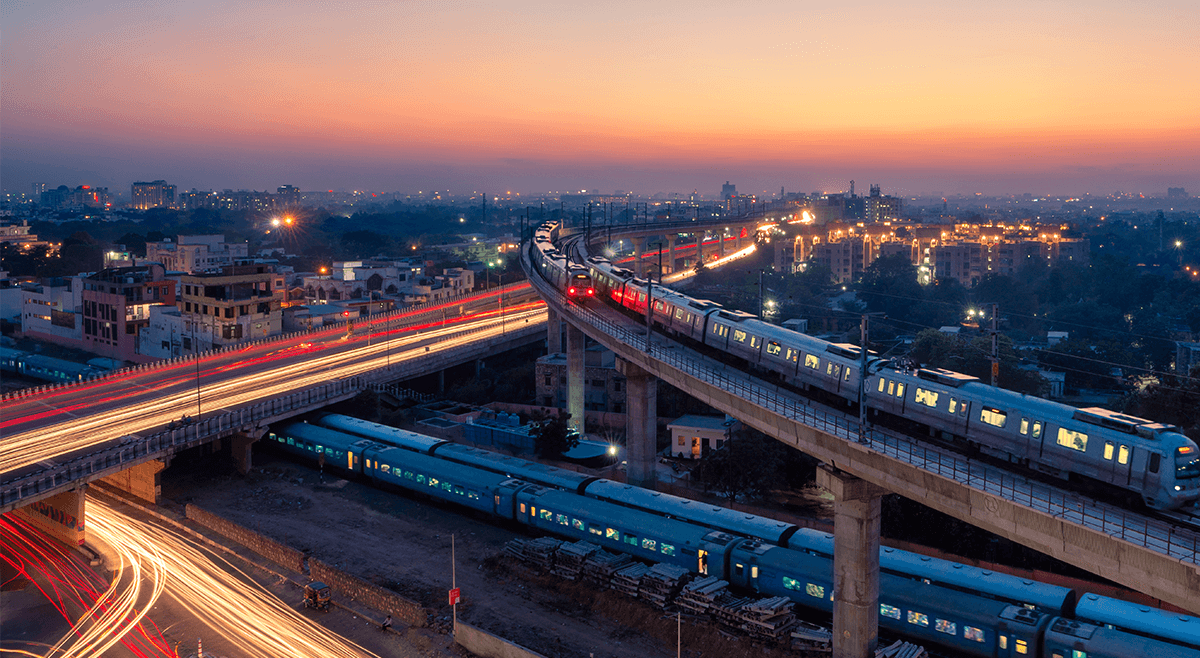Steel and Indian Economy: An Upward Curve
Infrastructure is a key index of a country’s economic position at the global stage. Developing infrastructure augments a country’s productivity, making firms more competitive and boosting the overall economy of a region. To that end, countries need steel to build new infrastructure like roads, railway lines, buildings and bridges, and also need it to lay new pipelines for gas, water and sanitation, etc.
Evidently then, steel consumption is widely taken to be an indicator of economic development. As a fast-developing country aiming to become a 5 trillion-dollar economy in few years, India’s economic growth is closely linked to the growth of its steel industry. It is the ultimate article of trade which can potentially fuel the rise of India as a global manufacturing hub and give the much-needed boost to its ‘Make in India’ campaign.
What Steel can do to make India a 5 trillion-dollar economy
The crucial role of steel in India’s growth and its future has been captured in a report prepared by the National Council of Applied Economic Research (NCAER). Its findings suggest that the steel sector in India has a very high potential of contributing in India’s overall development. Indeed, it is the one commodity that has multifarious applications spanning diverse sectors of economic activity. It is used in building houses, manufacturing cars, making daily use utensils as well as in for packaging. Special steels are increasingly being used in packaging, fabrication, and engineering industries such as power generation, petrochemicals, and fertilisers.
That steel plants present huge employment opportunities, especially in Tier III cities, is another fact that cannot be ignored. Steel has an employment multiplier effect of 6.8x while it has an output multiplier effect of 1.4x. Further, India has now overtaken Japan to become the world’s second largest producer of crude steel, producing more than 100 MT of it each year. Steel now contributes about 2% to India’s GDP and employs some 6 lakh people directly and 20 lakh people indirectly.
Moreover, India’s strategic location marked by a long coastline to enable exports and imports makes it a key player in the global steel market. These stats alone are reflective of the importance of steel propelling the country’s growth beyond 7% Y-o-Y.
India’s demand-supply scenario
The following factors give India a competitive advantage in steel production:
- Indigenous availability of high-grade iron ore and non-coking coal, the two key inputs of steel production
- A growing domestic and global market
- A vibrant MSME sector
- A young workforce and competitive labour costs
India’s current per capita consumption of steel stands at 69 kg, which is very low compared with the global average of 208 kg. The number drops to 10 kg if we concentrate on the rural areas. This indicates a strong growth potential that India can reach in terms of consumption.
In terms of demand, India is expected to see a huge growth in the coming decade, due to government initiatives like affordable housing in urban and rural areas, expansion of the railway network, development of the domestic shipbuilding industry as part of the Sagarmala project, opening up of defence sector for private participation as well as growth in the automobile sector. In fact, the demand is expected to grow threefold and reach 230 MT by 2030-31

Is India Ready?
Although it has become the world’s second-largest crude steel producer and is expected to become the second largest consumer soon, the nation is still far from being self-sufficient when it comes to production of high-grade steel.
The steel sector is marked by the limited availability of essential raw materials (such as high-grade lumpy manganese ore and chromite, coking coal, steel grade limestone, refractory raw materials, nickel, and ferrous scrap).
With this in perspective, the government has formulated the National Steel Policy 2017, with an aim to create a technologically advanced and globally competitive steel industry that promotes economic growth. The policy aims to achieve self-sufficiency in steel production by providing adequate policy support and guidance to steel manufacturers and encourage capacity additions.
The Road Ahead
With the Indian government’s vision of 5 trillion-dollar economy the steel sector is poised to take up the leading role in the nation’s journey towards becoming an economic powerhouse.
Information sources: Business World, Invest India




